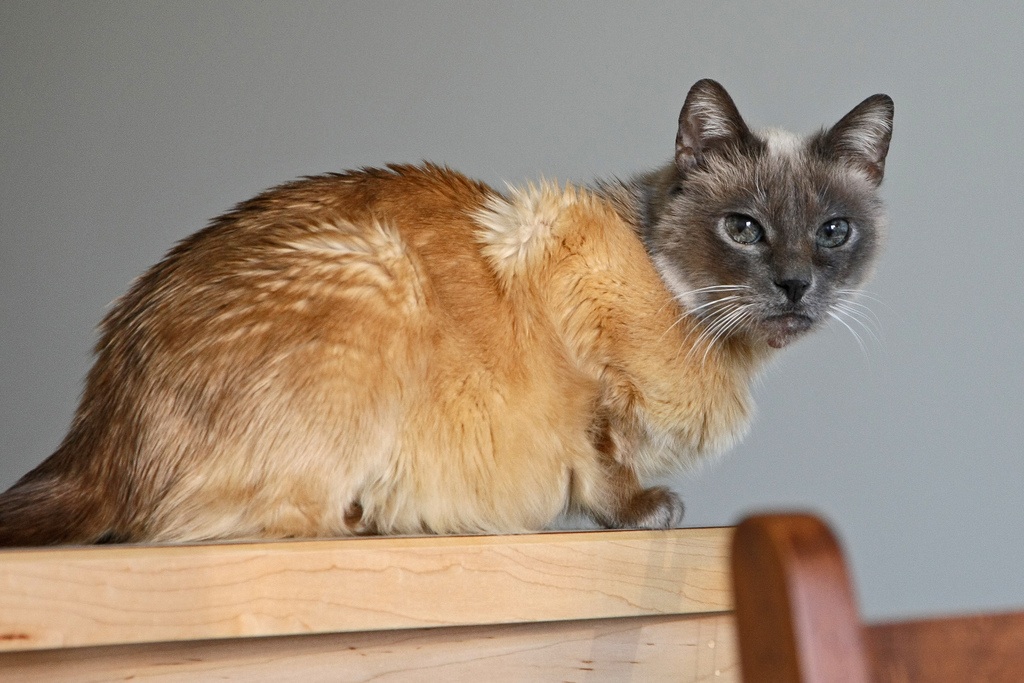The Most Unusually-coloured Cat Ever?

Sally, the elderly Siamese from Madison in the US state of Wisconsin, has changed radically in colour as she has grown older. She started off as a typical frost point (or lilac point as this variety is better-known in the UK), with greyish areas on the extremities of her body, covering her head, legs, feet and tail. This colouration is the result of a pigment called melanin.Then just like other Siamese, so her body colour started to darken with age.
The unusual markings of Siamese occur because the mutation responsible for their distinctive appearance is temperature-sensitive. In such cats and other animals such as Californian rabbits which possess the so-called Himalayan gene, the enzyme known as tyrosinase which is responsible for the production of melanin can only operate at relatively low body temperatures.
This explains why melanin pigment is normally only seen at the extremities of the body. In contrast though, bandage a Siamese’s paw for any length of time, and this will cause it to lose its colour. The bandage traps the body heat close to the skin, effectively raising the temperature here. Young Siamese are born completely white, because their bodies have not been exposed to localised cold in their mother’s womb before birth. Their point colouration only starts to emerge soon after birth.
But as such cats grow older, so their body temperature falls slightly, and their body coloration too then shows signs of darkening. Nevertheless, it is not normally as dramatic as in Sally’s case, which has created a much more distinctive contrast than normal.
Photo © ibm4381